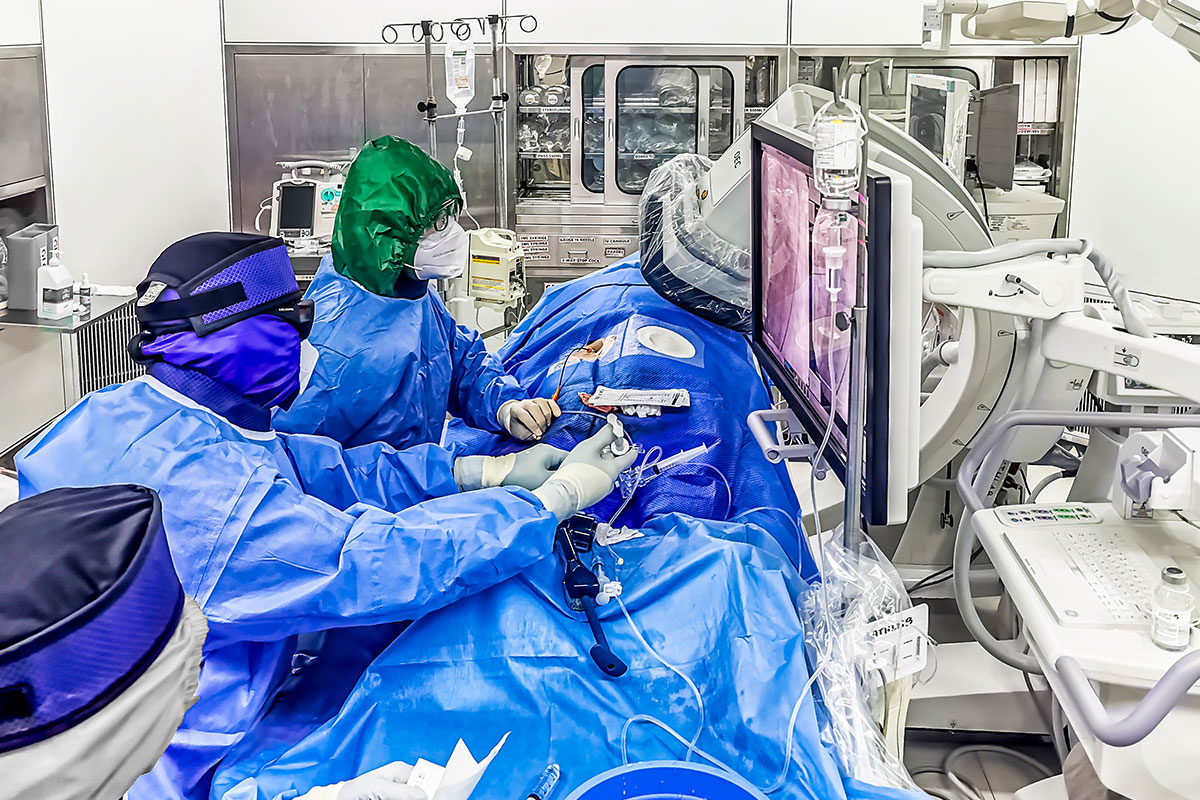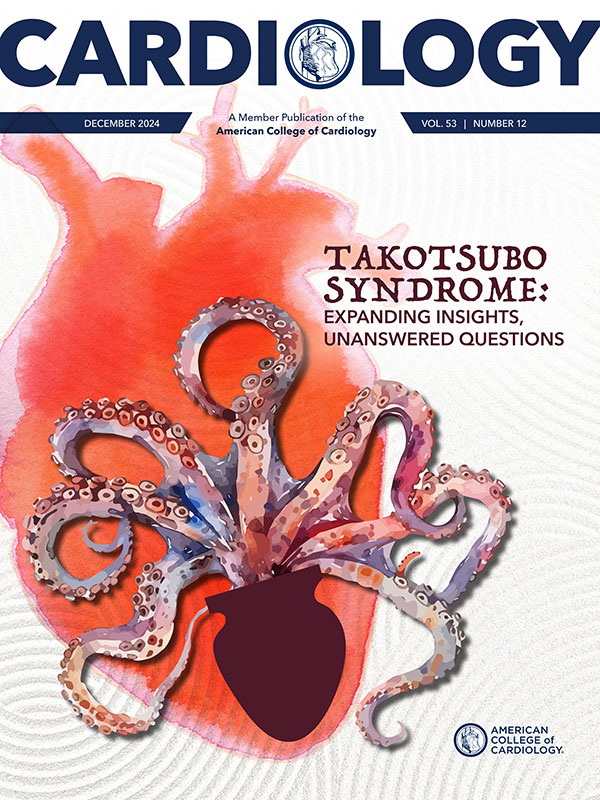Focus on Intervention | TCT 2024: A Recap of Key Trials and Findings

The rapid evolution of interventional cardiology was once again showcased at TCT 2024, with a series of pivotal trials that have the potential to reshape clinical practice. Here's a look at some of the most significant findings that may impact intervention on the mitral valve, tricuspid valve and aortic valve, as well as coronary and venous interventions.
Mitral Valve Interventions
The landmark MATTERHORN trial highlights the growing role of minimally invasive procedures in structural heart disease. It demonstrated that mitral transcatheter edge-to-edge repair (M-TEER) is a viable alternative to surgical mitral valve repair for patients with secondary mitral regurgitation (MR).
M-TEER was shown to be noninferior to surgery in terms of clinical efficacy and offered a superior safety profile. This finding could lead to a paradigm shift in the treatment of secondary MR, expanding the treatment options for a larger patient population.
The CLASP IID trial, building on previous research, further solidified the role of transcatheter mitral valve repair in the treatment of degenerative MR. The PASCAL system, a novel edge-to-edge repair device, was shown to be noninferior to the well-established MitraClip device in terms of major adverse events.
The approval by the U.S. Food and Drug Administration of the PASCAL system for this indication based on previous data from the CLASP trial program marks a significant milestone, offering a new treatment option for patients with prohibitive surgical risks.
Tricuspid Valve Interventions
The focus on tricuspid valve disease continues to gain momentum. The TRISCEND II trial evaluated the safety and efficacy of the Evoque transcatheter tricuspid valve replacement (TTVR) system in patients with symptomatic severe tricuspid regurgitation (TR).
The trial demonstrated that TTVR with the Evoque valve, combined with medical therapy, significantly improved cardiovascular outcomes compared with medical therapy alone. This finding underscores the potential benefits of TTVR in improving quality of life and reducing mortality in patients with severe TR, offering a ray of hope for these patients and the future of tricuspid valve interventions.
Aortic Valve Interventions

ACCURATE IDE assessed the safety and efficacy of the Accurate neo2 valve, a novel self-expanding aortic valve prosthesis. While the device demonstrated reasonable performance, it failed to meet the primary endpoint of noninferiority compared with a commercially available valve. The underlying reasons for this outcome, including potential issues with valve frame under-expansion, warrant further investigation.
The role of cerebral embolic protection (CEP) devices in TAVR continues to be debated. The PROTECTED TAVR trial evaluated the routine use of a CEP device in reducing stroke risk during transfemoral TAVR. The trial failed to demonstrate a significant reduction in stroke risk with the use of a CEP device. These findings suggest that the routine use of CEP devices may not be necessary for all patients undergoing TAVR.
Early TAVR in patients with chronic systolic heart failure and moderate aortic stenosis was explored in TAVR UNLOAD, which found that TAVR did not improve a composite of clinical events and quality of life at the longest follow-up in this trial.

However, at the one-year follow-up, TAVR was associated with an improvement in the composite endpoint and quality of life. These findings suggest that the timing of TAVR in this patient population may require further investigation.
The EVOLVED trial assessed the efficacy of early aortic valve replacement in asymptomatic patients with severe aortic stenosis, normal ejection fraction and myocardial fibrosis. The trial failed to demonstrate a significant benefit of early intervention in terms of the primary endpoint of all-cause mortality or unplanned aortic stenosis-related hospitalization.
However, the trial did show a reduction in aortic stenosis-related hospitalization and an improvement in NYHA class. These findings highlight the complexity of decision-making in asymptomatic patients with severe aortic stenosis and the need for careful patient selection.
Coronary and Venous Interventions

Orbital atherectomy in the treatment of calcified coronary lesions was the focus of the ECLIPSE trial. However, it failed to demonstrate a significant benefit of orbital atherectomy in terms of clinical outcomes.
In fact, there was a concerning increase in all-cause and cardiovascular mortality in the orbital atherectomy group. These findings suggest that orbital atherectomy should be used judiciously and only in carefully selected patients.
IVUS-ACS/ULTIMATE-DAPT assessed the optimal duration of dual antiplatelet therapy (DAPT) after PCI for acute coronary syndrome (ACS). The trial demonstrated that a shorter duration of DAPT (1 month) followed by deescalation to ticagrelor monotherapy was associated with a lower bleeding risk without an increase in ischemic events compared with standard 12-month DAPT. This finding has the potential to reduce bleeding complications and improve patient outcomes.
The HELP-PCI trial evaluated the impact of early administration of unfractionated heparin in patients with STEMI. The trial showed that early heparin administration improved myocardial blood flow but did not reduce the risk of major adverse cardiac events at one-year follow-up.
While the findings are promising, further research is needed to confirm the long-term benefits of early heparin administration.

The goal of the CLEAR SYNERGY (OASIS 9) trial was to determine the long-term cardiovascular effects of colchicine following PCI for STEMI or NSTEMI. It showed that in patients with acute MI undergoing PCI, daily treatment with colchicine did not reduce MACE at five years compared with placebo.
Finally, moving to the venous space, the PEERLESS trial, which investigated the efficacy and safety of large-bore mechanical thrombectomy compared with catheter-directed thrombolysis in the treatment of intermediate-high-risk pulmonary embolism (PE).
The study showed that in patients with intermediate-high risk PE undergoing catheter-based intervention, large-bore mechanical thrombectomy resulted in less frequent clinical deterioration and lower post-procedure ICU utilization with similar bleeding risk to catheter-directed thrombolysis.
Learn More
Visit the TCT 2024 Hub at ACC.org/TCT2024 for ACC's comprehensive coverage of TCT 2024 science, including trial summaries, news stories, journal scans and visual abstract.
Click here for all the studies simultaneously published in JACC Journals, along with article illustrations, trial infographics, author interviews, and Journal Club materials.

This article was authored by M. Chadi Alraies, MD, FACC, medical director of the cardiac catheterization laboratory, cardiac rehabilitation, and interventional cardiology research at Detroit Medical Center, Harper University Hospital, in Michigan.
Clinical Topics: Acute Coronary Syndromes
Keywords: Cardiology Magazine, ACC Publications, Aortic Valve, Mitral Valve, Tricuspid Valve, Acute Coronary Syndrome, TCT24, Transcatheter Cardiovascular Therapeutics
